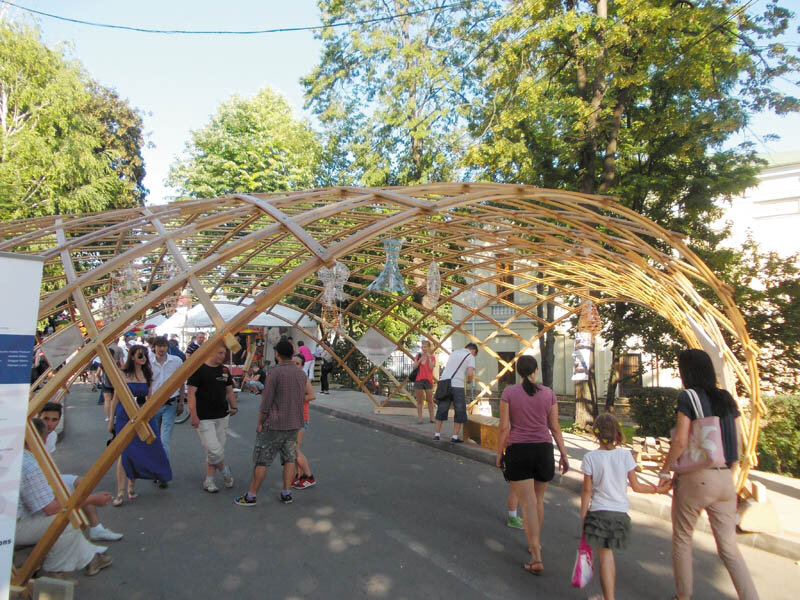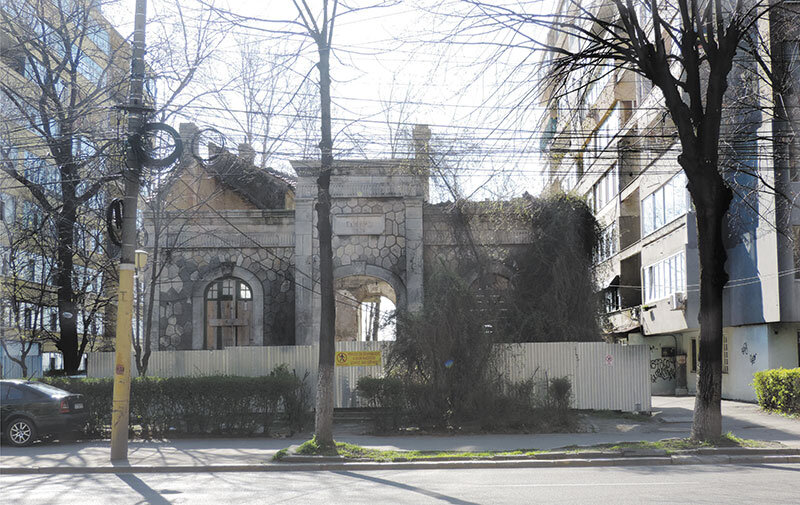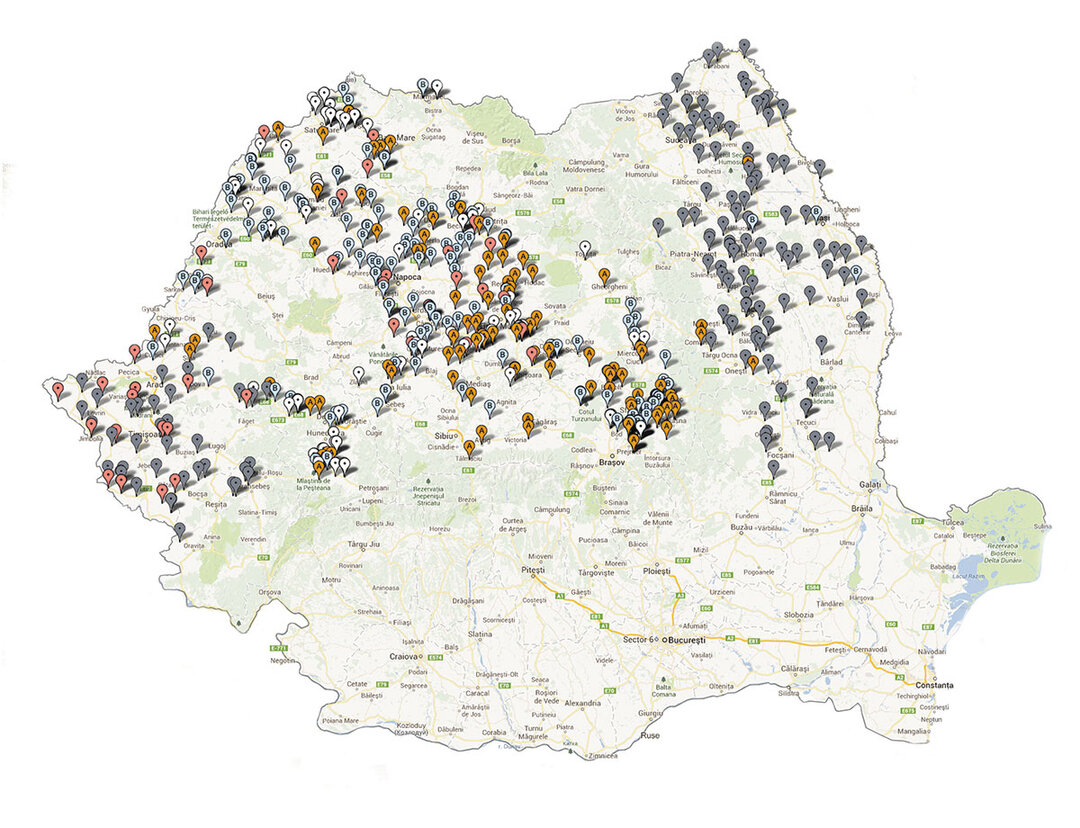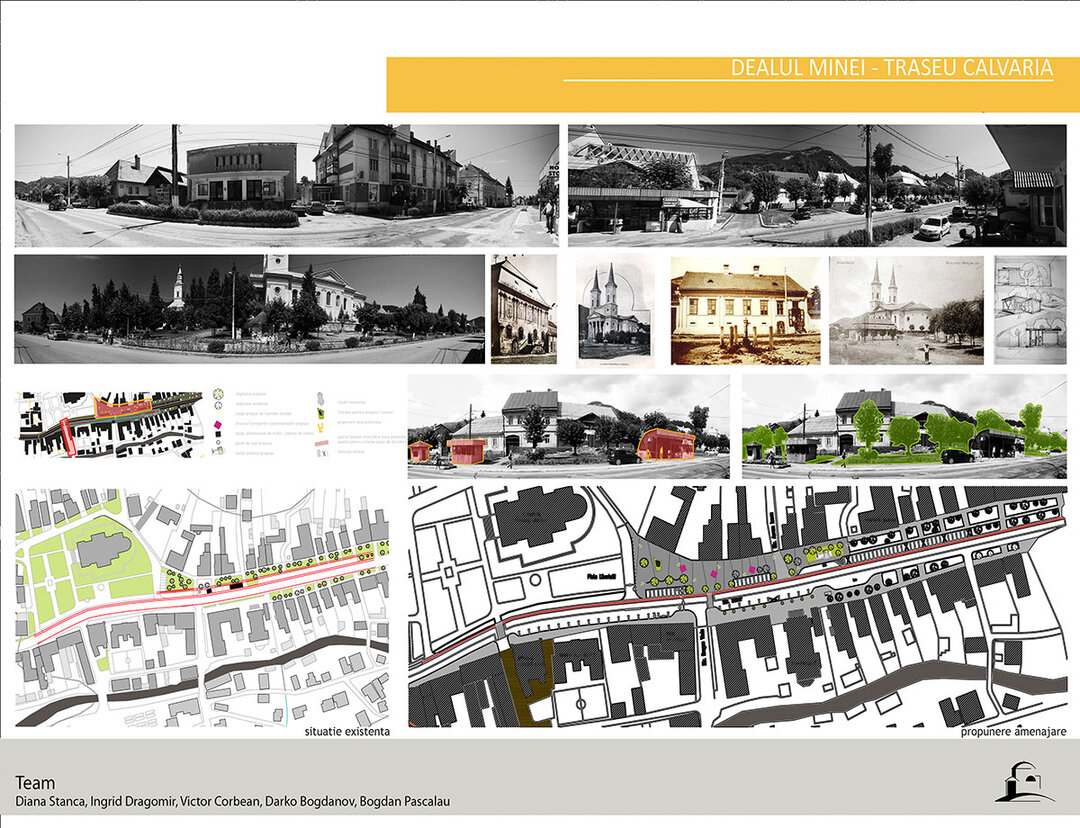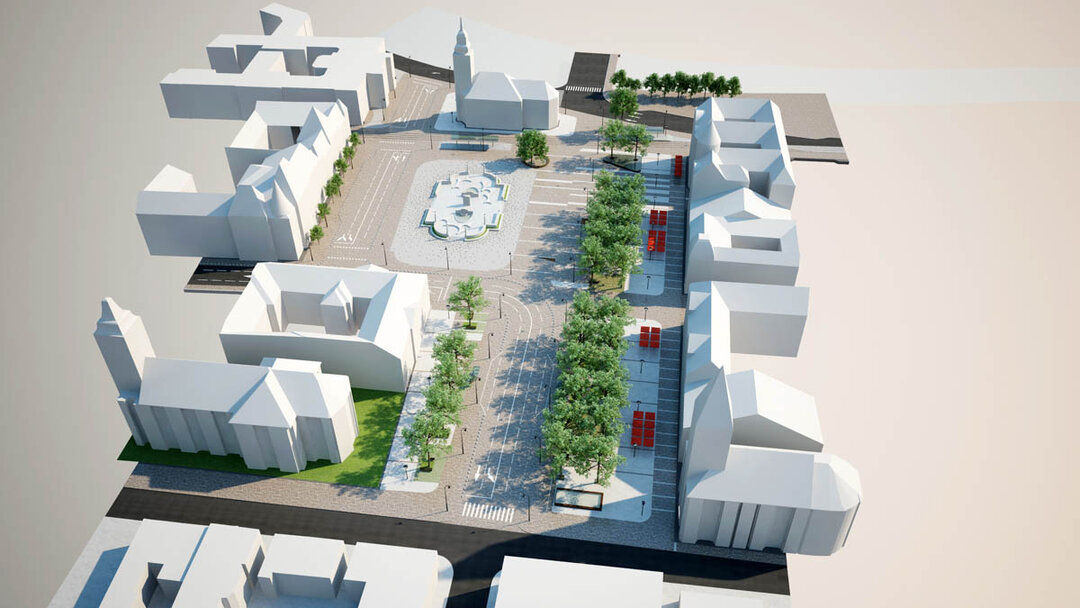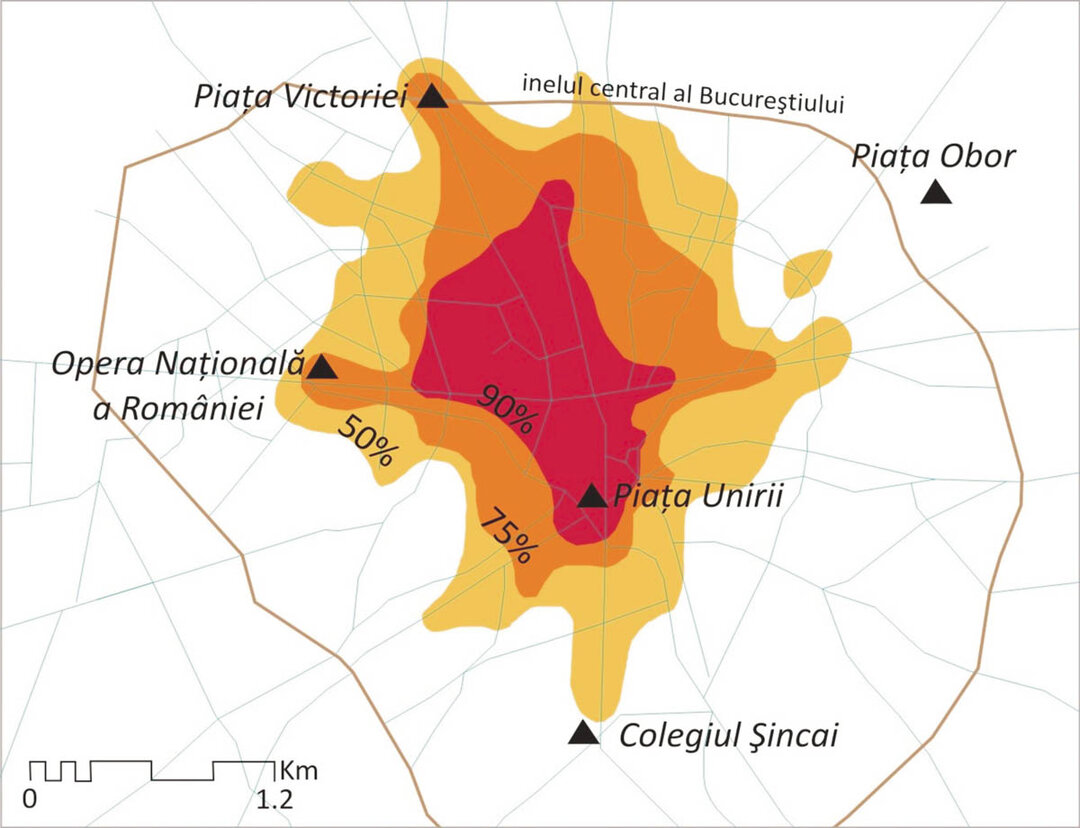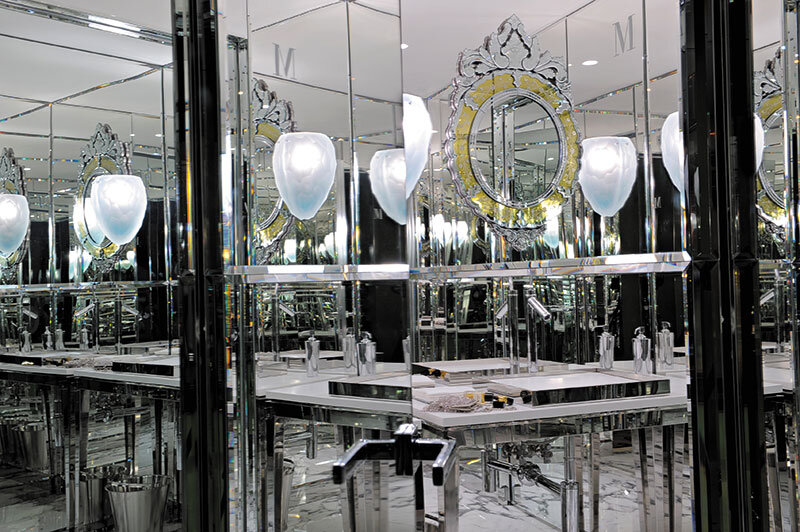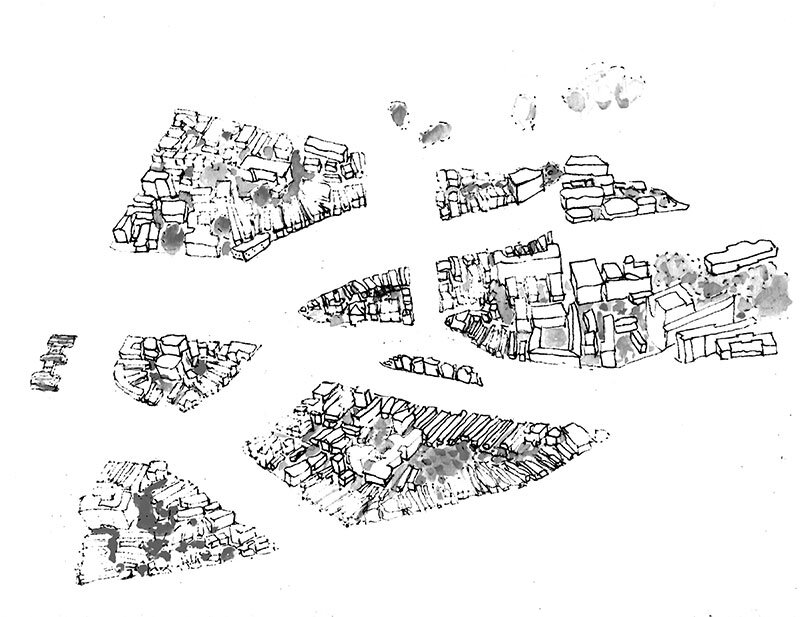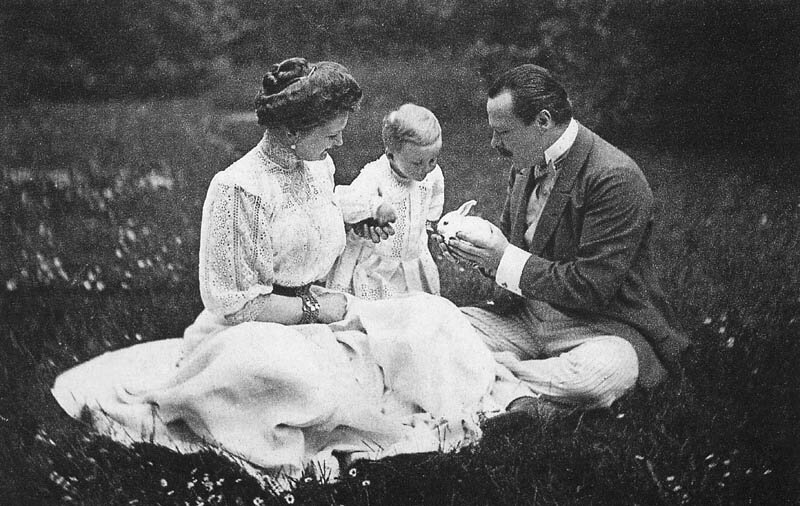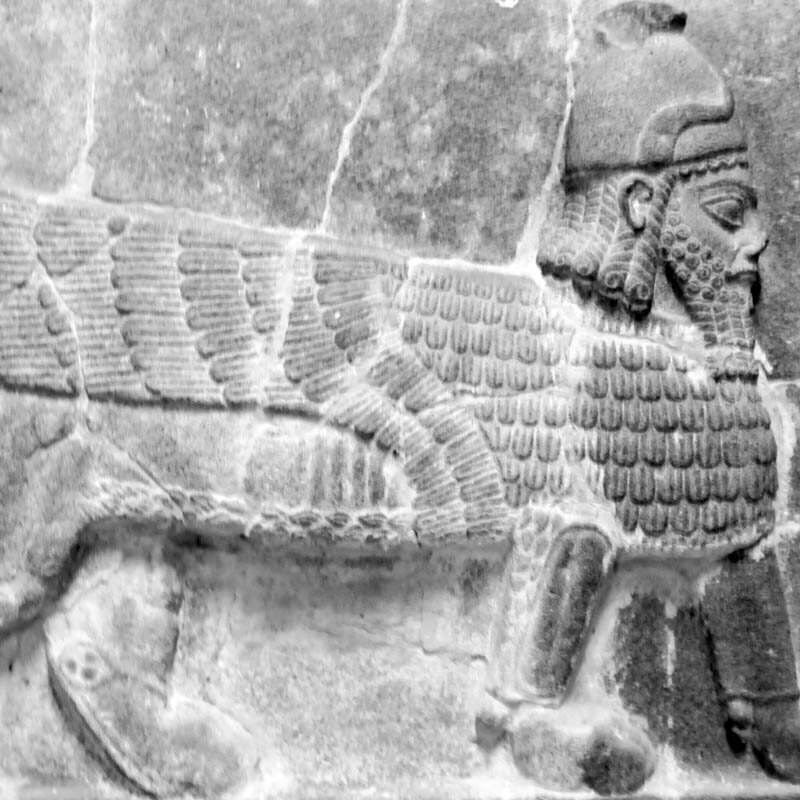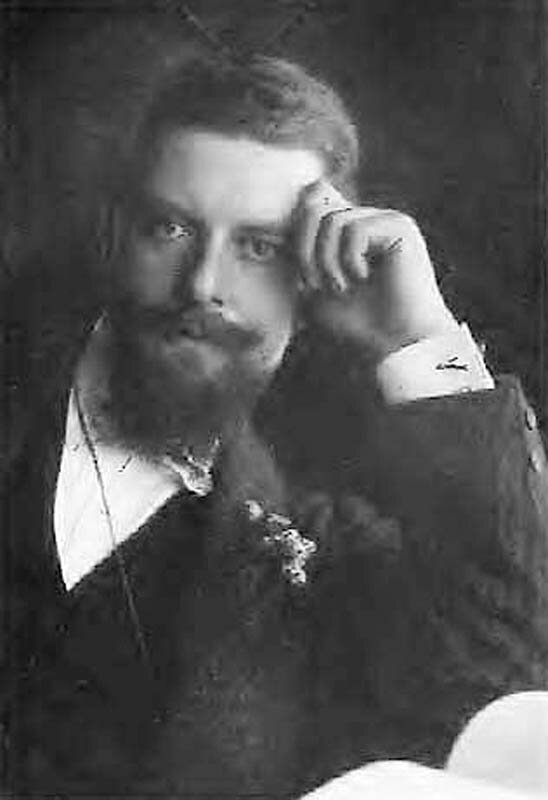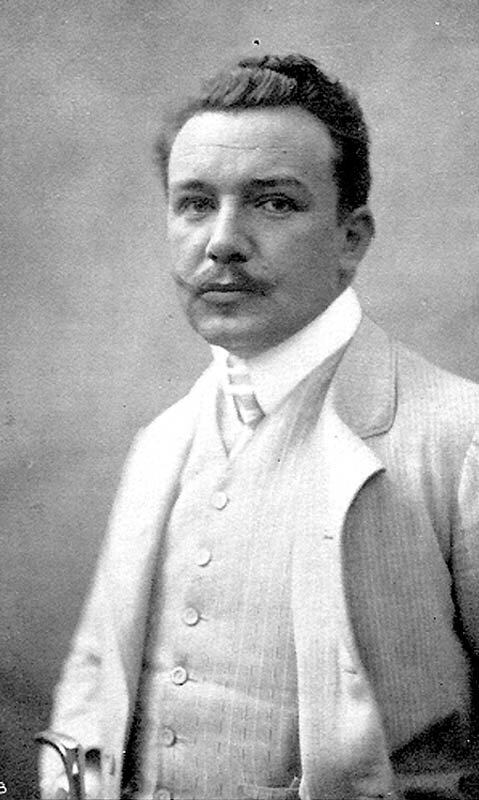Afacerea Olbrich. O poveste cu prințese, cu moarte, renaștere și arhitectură
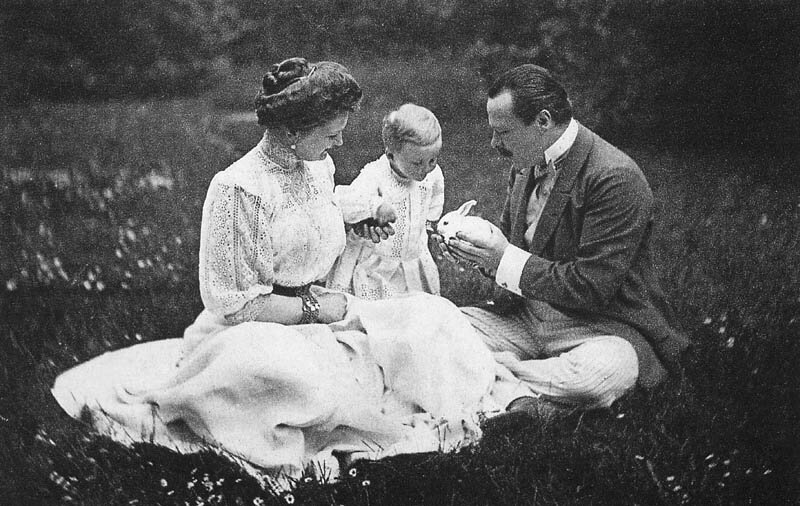
| „Es war einmal…” scrie pe frontonul căsuței construite pentru prințesa Elisabeth, fetița de șapte ani a Marelui Duce von Hesse bei Rheinland, în grădina Palatului Wolfsgarten, lângă Darmstadt. …„Căsuță construită anume pentru mine în 1902 de domnul Joseph Maria Olbrich.” |
| Era în manieră Jugendstil, gândită pentru joaca copiilor, cu un salon spațios și dependințe echipate modern, cu amenajări interioare și exterioare concepute integral de același arhitect, cu pergolă, țestoasă în grădină și porumbei aurii pe stâlpii gardului. Avea 1,90 m înălțime liberă la interior, ceea ce înseamnă, judecând după dimensiunile de atunci, o reducere pentru copii cam la 60%. Un an s-a jucat fata acolo, apoi a murit de tifos în 1903, conform blestemului familiei.
A fost odată, deci, un nobil iluminat, ultimul de dinaintea Republicii de la Weimar. Ernst Ludwig, Großherzog von Hesse und bei Rhein - Ernie, între noi - era nepotul Reginei Victoria a Marii Britanii. Acolo, la bunica, a cunoscut el încă din copilărie mediul generat de Arts and Crafts. Când avea doi ani a cunoscut pentru prima dată moartea, odată cu cea accidentală a fratelui său, în timp ce se jucau. La zece ani i-au murit alți parteneri de joacă, sora și mama. De atunci, morțile în familie l-au urmărit și odată cu ele spaima de a muri singur. Era un om cu carieră militară și cu o viață activă - la unul dintre divorțuri i-au fost invocate oarece relații homosexuale din tinerețe. Apoi, în fel și chip, i-au murit toți copiii, în epidemii și accidente. Era un om trist care, în ciuda puterii sale politice, nu se mai simțea bine decât în lumea artei. În 1899, ducele a inițiat la Darmstadt, pe Mathildenhöhe, un proiect cultural, o colonie de artiști progresiști, care visau să reinventeze arhitectura pentru oameni. Singurul arhitect printre șase celebrități ale artei noi era tânărul Joseph Maria Olbrich. Cu toții urmau să regenereze arhitectura după ruperea de istoricism, unind-o cu artele și cu meșteșugul, pe principiile Arts and Crafts și Wiener Secession, pentru a obține opera de artă totală. Gesamtkunstwerk era termenul lui Richard Wagner. Asociată câștigurilor tehnice, ea avea să le facă oamenilor viața mai frumoasă și asociată unei gândiri economice moderne, avea să impulsioneze progresul societății. „Să înflorească landul meu Hesse, și în el arta”, spusese marele duce. Evenimentul nu însemna, deci, doar visul unei noi estetici integrate, ci și o nouă conștiință a arhitecturii, cu asumată responsabilitate socială. Și asta făcea ca organizarea unui eveniment cu o astfel de temă să constituie o disidență politică și un act de curaj - chiar și în acea cvasi-izolare provincială. Noroc că împăratul avea alte probleme. Primul eveniment de pe Mathildenhöhe, expoziția din 1901 numită „Un document al artei germane”, a fost un dezastru financiar, dar un moment de glorie a arhitecturii ca artă și fapt social. El a catapultat Darmstadt, Jugendstil, pe Olbrich, gândirea și creația liberă în lumina rampei. Așa că Ernie a continuat să investească perdant și nobil dezinteresat în acel viitor în care credeau cu toții. S-a născut astfel, acolo, o splendidă variantă de modernitate. După zece ani de carieră intensă, Olbrich a murit de-o leucemie galopantă, la 40 de ani, la trei săptămâni după nașterea primei lui fetițe. Și lui Ernst Ludwig au continuat să-i moară toți apropiații. Au murit și celebrele lui surori (tristă celebritate!): Alix von Hesse, devenită țarina Alexandra Feodorovna, împușcată cu Nicki al ei și toți copiii lor la Yekaterinenburg, și Elisabeth von Hesse, și ea o Feodorovna Romanov prin căsătorie, îngropată de vie, tot de bolșevici, în 1918. (Înainte de a muri, în groapă, a mai reușit să-i panseze băiețelului ei rana de la cap.) Tot în 1918, guvernul de la Weimar i-a abolit lui Ernst Ludwig titlul nobiliar. El a supraviețuit tuturor evenimentelor și a murit în 1937. Singur. |
| Citiți textul integral în numărul 4/2013 al revistei Arhitectura |
| “Es war einmal…”, says the gable of the little house built for Princess Elisabeth, the seven year old girl of the Grand Duke von Hesse bei Rheinland, in the garden of the Wolfsgarten Palace, near Darmstadt. … “A little house built just for me in 1902 by Mr Joseph Maria Olbrich.” |
| It was in the Jugendstil manner, especially conceived for children’s play, with a spacious parlor and modernly equipped appurtenances, with interior and exterior arrangements conceived in full by the same architect, with a pergola, a turtle in the garden and golden pigeons on the fence pillars. It had a height of 1.90 m indoors, which meant, according to the measurements then applicable, a reduction for children to approximately 60%. The girl played there only a year, then she died of typhus, in 1903, fulfilling the family curse.
So, once upon a time there was an open-minded, illustrious aristocrat, the last before the Weimar Republic. Ernst Ludwig, Großherzog von Hesse und bei Rhein - Ernie, between us - was the nephew of Queen Victoria of Great Britain. There, at his grandmother’s, he became acquainted since early childhood with the environment generated by Arts and Crafts. When he was two years old he first encountered death when his brother accidentally died while playing. When he was ten other play partners of his died, along with his sister and his mother. Since then, deaths in the family followed him all of his life, along with the fear of dying alone. He was a military man with an active life - in fact, upon one of his divorces, some homosexual relationships from his youth were invoked. Then all of his children strangely died in epidemics and accidents. He was a sad man who, despite his political power, only felt well in the world of art. In 1899, the duke initiated at Darmstadt, on Mathildenhöhe, a cultural project, a colony of progressist artists who dreamt of reinventing architecture for people. The only architect among the six celebrities of the new art was the young Joseph Maria Olbrich. They were all to regenerate architecture after the split from historicism, by uniting it with the arts and the crafts, in line with the principles of Arts and Crafts and Wiener Secession, in order to reach the total art work. Gesamtkunstwerk was Richard Wagner’s term. Associated with the technical gains, it was to make people’s life more beautiful and associated with a modern economic thinking, it was to drive society onward. “Let my land Hesse flourish, and let art grow and develop in it”, the grand duke had said. Therefore, the event did not amount only to the dream of a new, integrated aesthetic, but to a new architectural conscience, with an assumed social responsibility. And thanks to this, the organization of an event with such a theme constituted an act of political dissidence and an act of courage, including in that provincial quasi-isolation. Luckily, the emperor had other problems on his mind. The first event on Mathildenhöhe, the exhibition from 1901, entitled “A Document of German Art”, was a financial disaster, but a moment of glory for architecture as art and social fact. It suddenly put Darmstadt, Jugendstil, Olbrich, free thinking and free creation in the limelight. So Ernie continued to invest nobly, like a true aristocrat who disregards his losses, in that future in which they all believed. Thus, a splendid version of modernity took shape there. After ten years of intense career, Olbrich died of acute leukemia, at the age of 40, three weeks after the birth of his first baby girl. All of Ernst Ludwig’s close relatives continued to die, too. In fact, his famous sisters (sad fame!) also died: Alix von Hesse, which had become czarina Alexandra Feodorovna, was shot with her Nicki and all their children at Yekaterinburg, and Elisabeth von Hesse, also a Feodorovna Romanov by marriage, was buried alive by the Bolsheviks in 1918. (Before she died, in her grave, she still managed to bandage her son’s head wound.) In the same year 1918, the Weimar government abolished Ernst Ludwig’s noble title. He survived all these events and died in 1937. Alone. |
| Read the full text in the print magazine. |
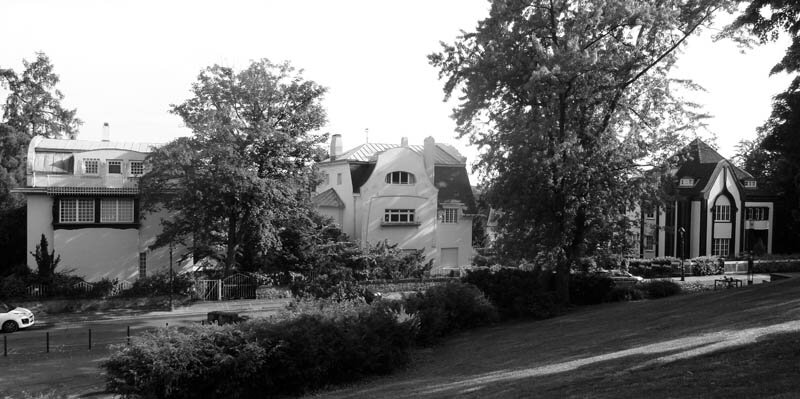
Locuințele artiștilor, arhitect Joseph Maria Olbrich,
prezentate ca exponate la prima expoziție a Coloniei Artiștilor: kleines Glückert Haus, großes Glückert Haus, Behrens Haus, văzute în 2013
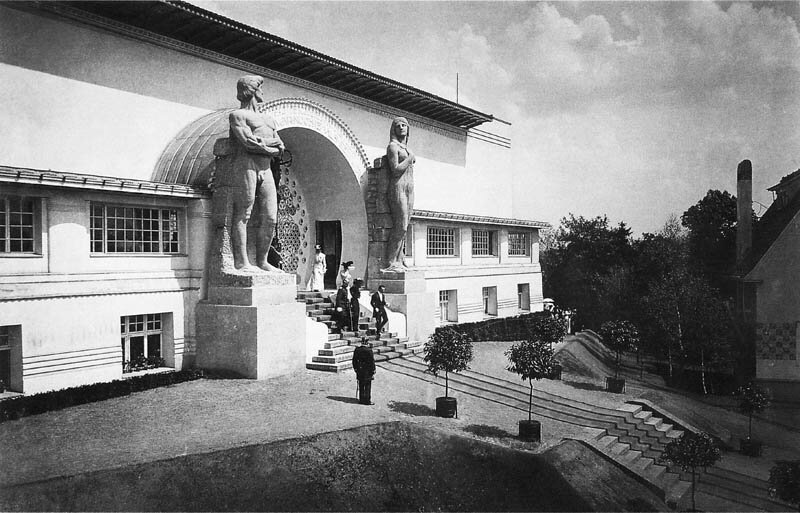
Clădirea cu atelierele artiștilor, numită Ernst Ludwig Haus, în 1901

Clădirea cu atelierele artiștilor, numită Ernst Ludwig Haus, în 2013
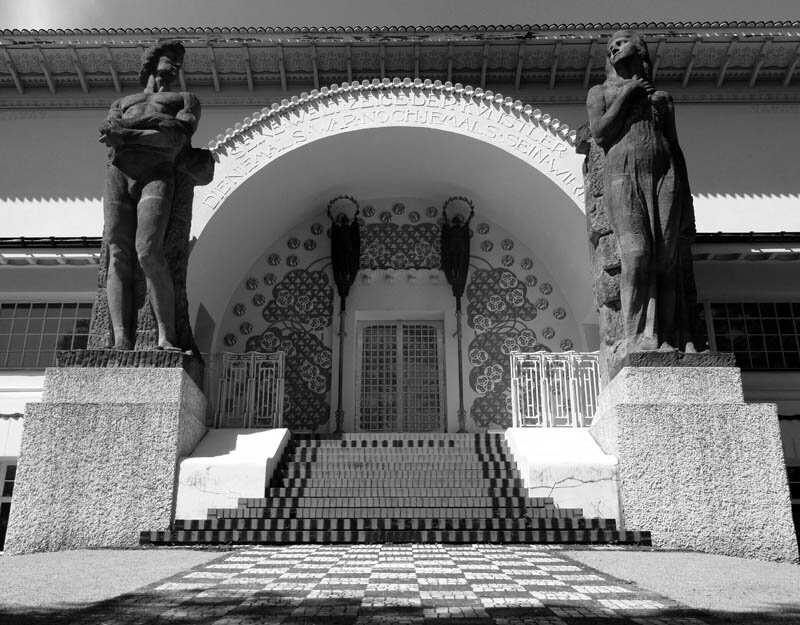
Intrarea la ateliere, străjuită de sculpturile Puterea și Frumusețea, de Ludwig Habich
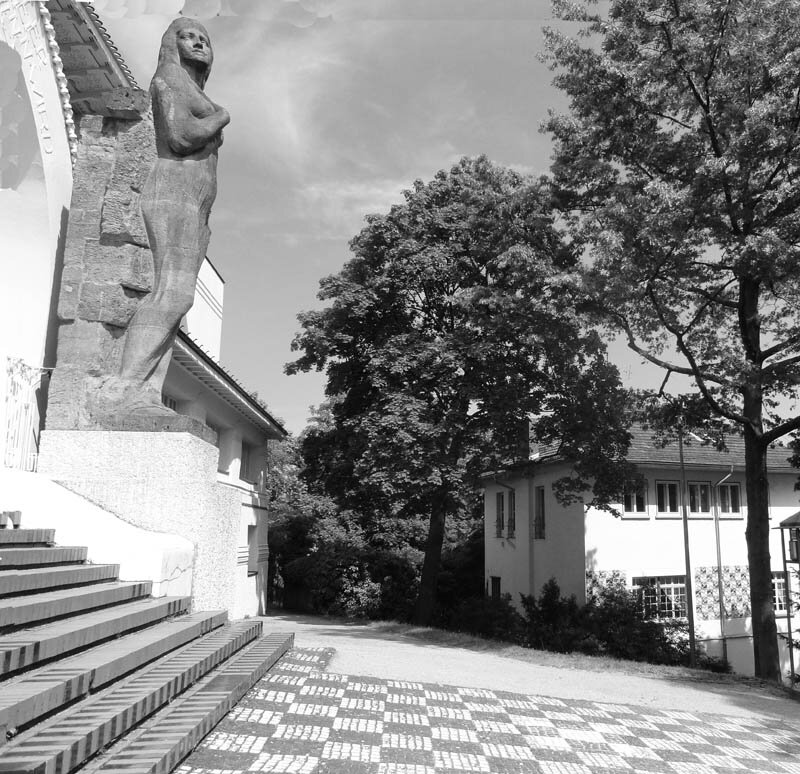
Sculptura numită Puterea și un fragment din casa Olbrich

Olbrich Haus, în 1901

Detaliu de fațadă la Olbrich Haus, în 2013
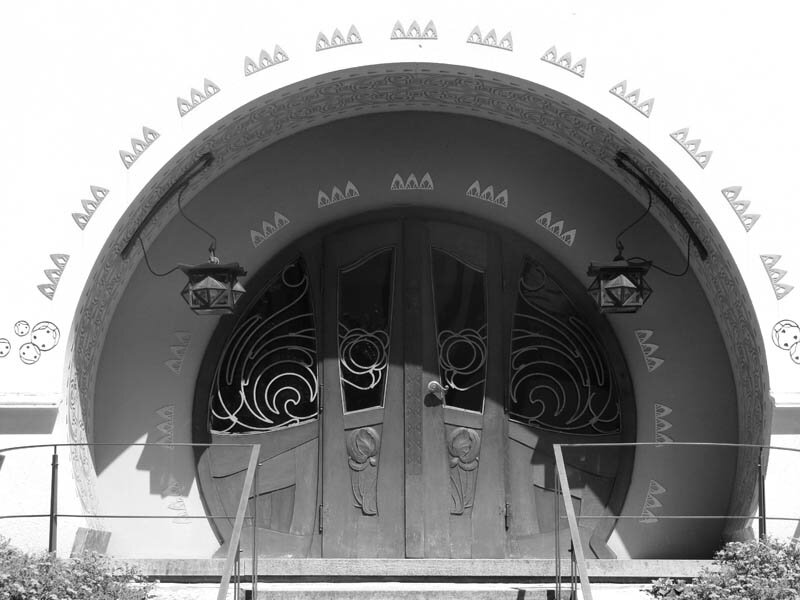
Portița intrării secundare la Olbrich Haus, 2013
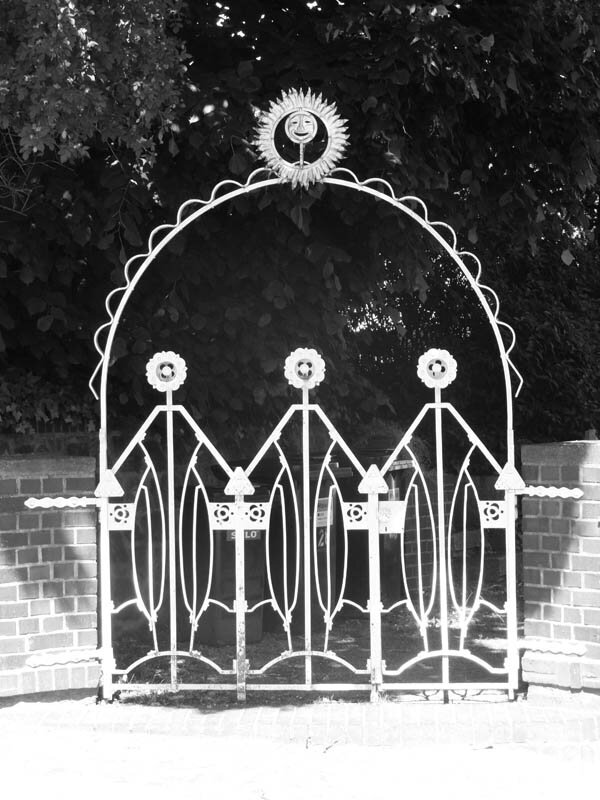
Portița intrării secundare la Olbrich Haus, 2013

Mobilier urban de Joseph Maria Olbrich
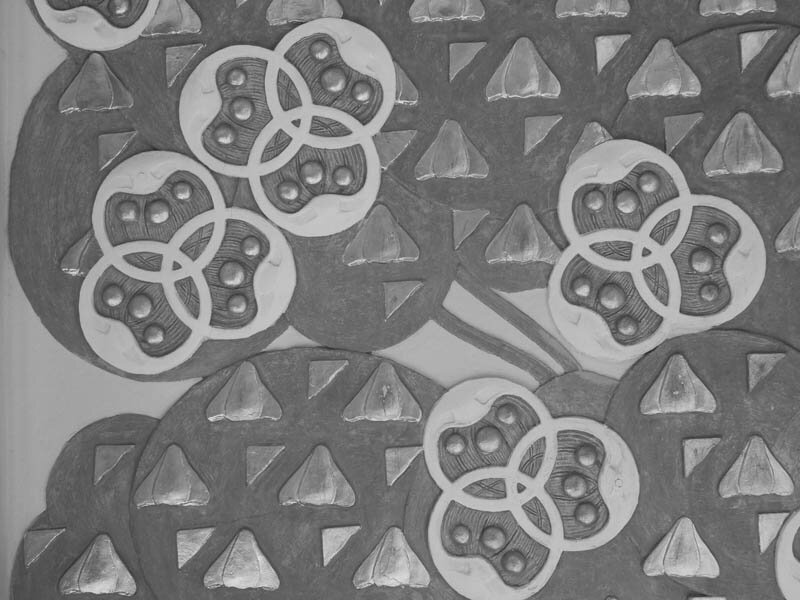
Alte crime ale lui Joseph Maria Olbrich, la Ernst Ludwig Haus
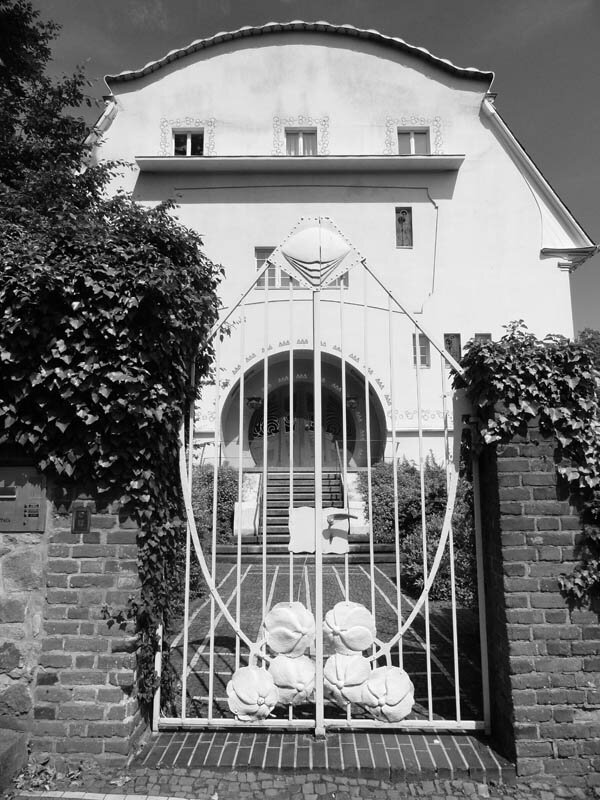
Großes Glückert Haus, în 2013
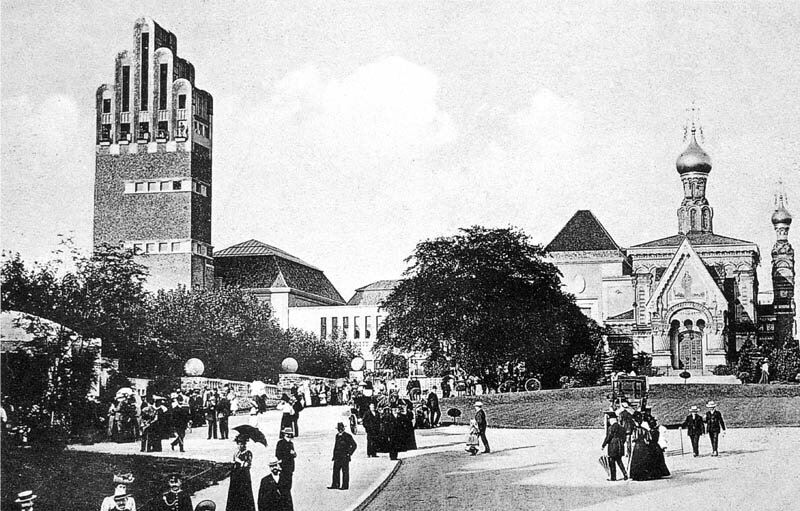
Imagine de la deschiderea expoziției din 1908
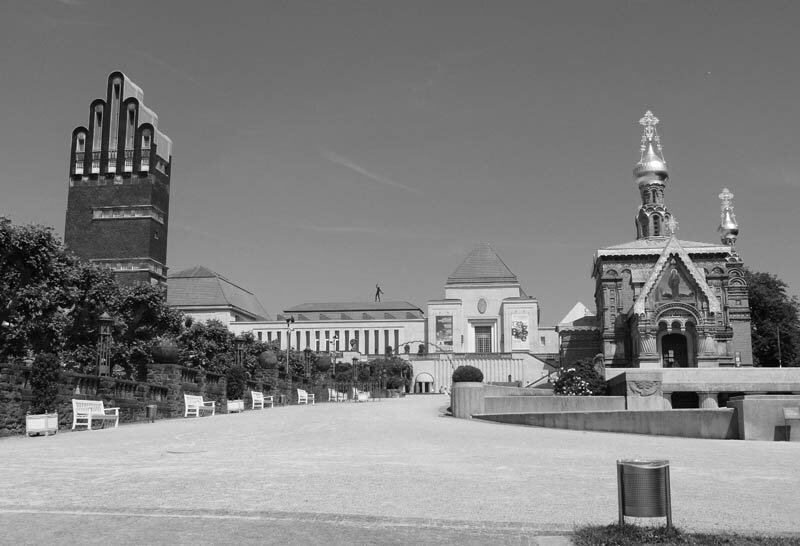
Trei exponate de impact, în 2013
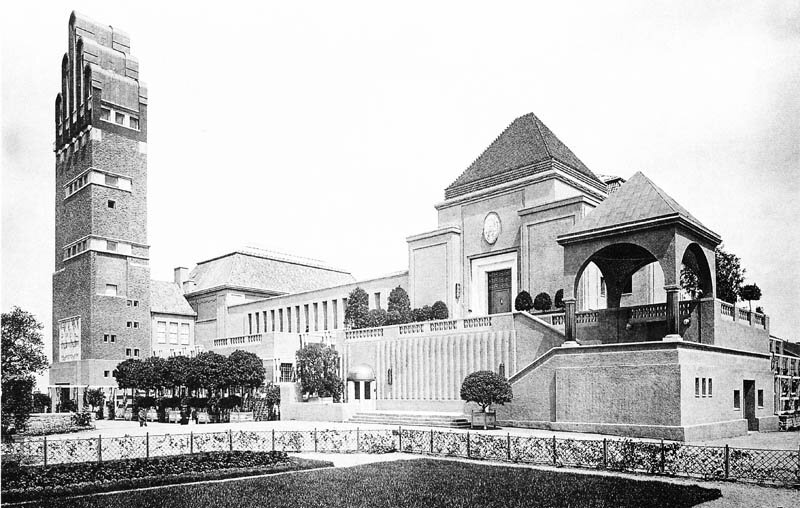
The wedding tower and the exhibition pavilion, the last exhibits in 1908

The same exhibits in 2013

Kleines Glückert Haus, in 1901
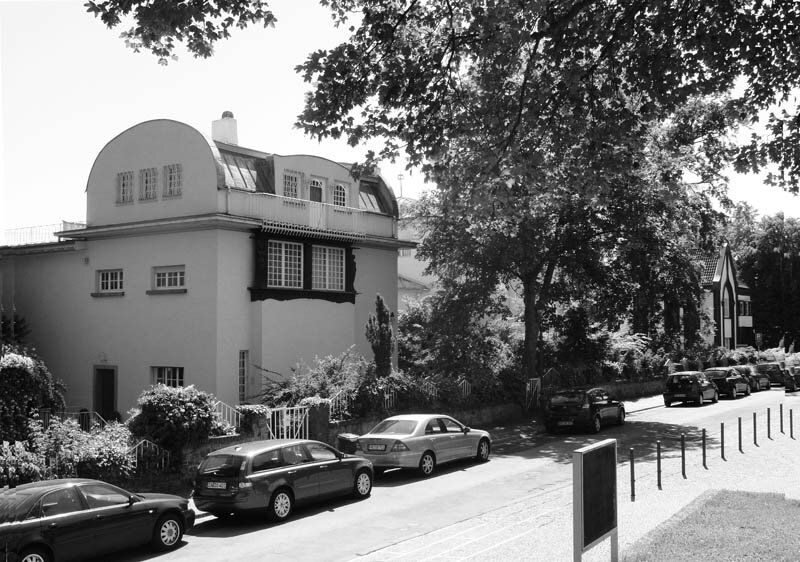
Kleines Glückert Haus, in 2013. In the background, on the street, one can see the Behrens house
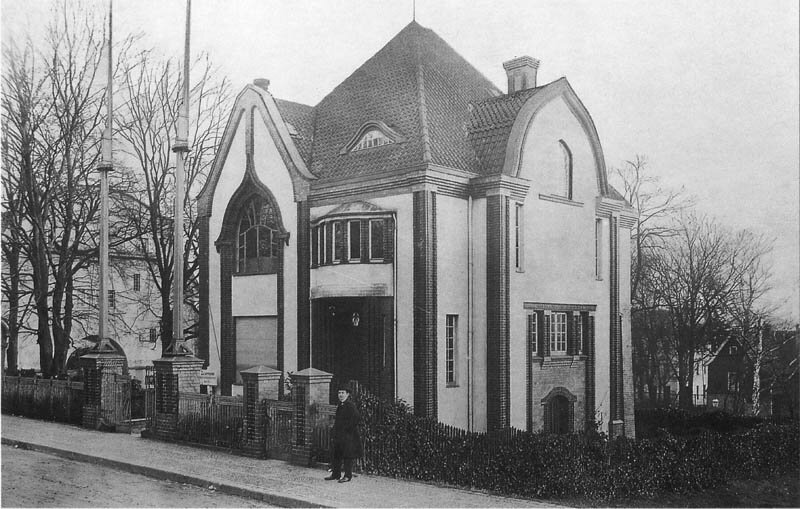
Behrens Haus, in 1903
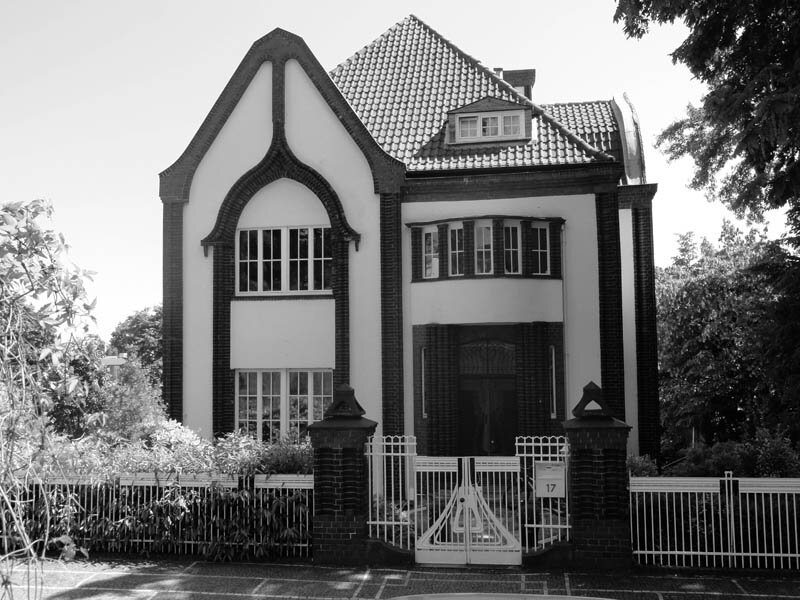
Behrens Haus, in 2013
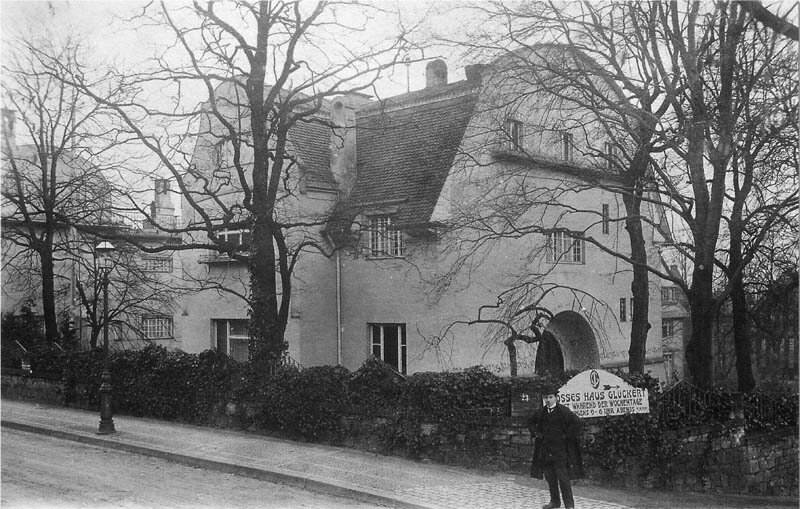
Großes Glückert Haus, in 1908
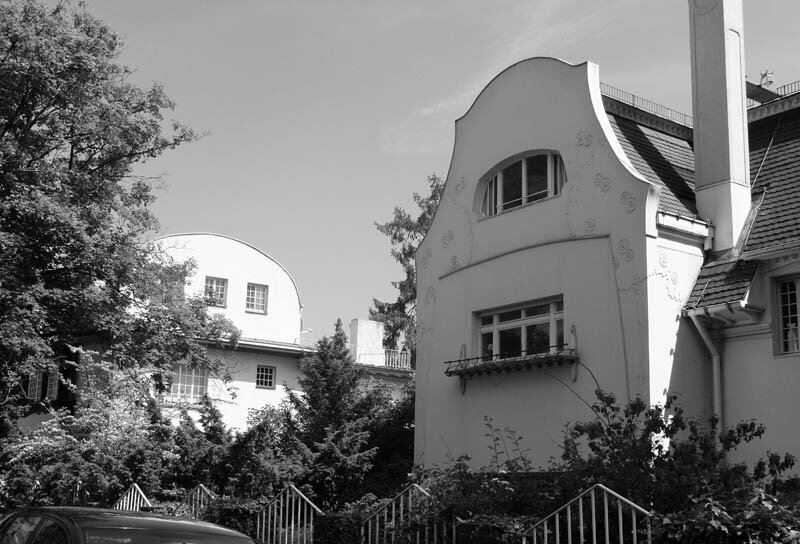
Großes Glückert Haus in the foreground and Kleines Glückert Haus in the
backgroiund, in 2013
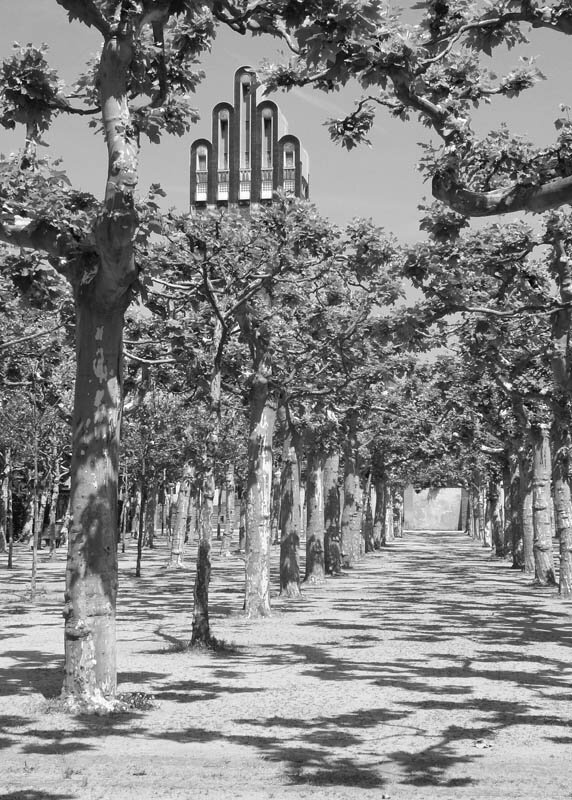
The sycamore plantation, designed by Olbrich in 1904, seen in 2013. In the background, the Wedding Tower

